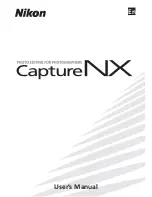
DDL Compiler Commands
Data Definition Language (DDL) Reference Manual — 426798-002
9- 38
C_MATCH_HISTORIC_TAL Command
/* Definition EMP1 created on 03/06/2000 at 17:24 */
#pragma fieldalign shared2 __emp1
typedef struct __emp1
{
decimal item1[5];
unsigned long item2;
} emp1_def;
C output produced for EMP1.
!
C_MATCH_HISTORIC_TAL Command
The C_MATCH_HISTORIC_TAL command causes DDL to generate C source code
that corresponds to the TAL and COBOL source generated.
C_MATCH_HISTORIC_TAL
directs DDL to generate C data structures, equivalent to TAL and COBOL data
structures, for the following starting on an odd byte:
•
A structure that contains a substructure beginning on an odd byte boundary
•
A structure that contains a substructure ending on an odd-byte boundary,
followed by a user-defined item that DDL would allocate starting on the
odd byte
DDL allocates data starting on an odd byte for character data only.
The source code for a generated
struct
is preceded by the following statement:
#pragma fieldalign shared2 __struct-name
NOC_MATCH_HISTORIC_TAL
resets the option.
C_MATCH_HISTORIC_TAL Command Guidelines
The following points are guidelines when using the C_MATCH_HISTORIC_TAL
command:
•
The C_MATCH_HISTORIC_TAL command does not affect the DDL dictionary.
•
The C_MATCH_HISTORIC_TAL command allows members of structures to be
aligned to a byte or word boundary. If the remaining byte in a two-byte word is not
large enough for the next member, then DDL assigns the next word aligned
address. This guideline also applies to substructures that are declared inline, using
the first member of the substructure.
[ NO ] C_MATCH_HISTORIC_TAL
















































